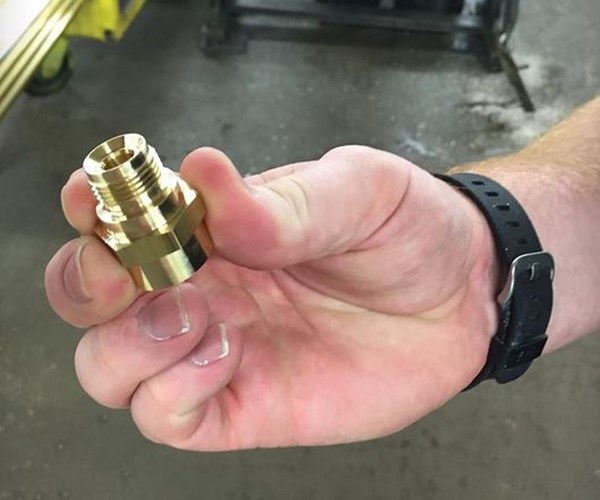Lights Out, Machines On
Whether you’re currently involved in lights-out machining or just interested in learning more about the process, this company’s experience will provide useful insights.

Brass is the perfect material for lights-out machining because of how easy it is to work with.
If you’re not cutting chips, you’re not making money. It’s as simple as that. Companies that are not running a third shift can lose significant amounts of production time. Recovering that lost productivity led to the development of lights-out machining in the late 1980s, but in those days the process presented quite a few challenges having to do with sustained quality, repeatability, and undetected tool failure. Before monitoring systems were developed that automatically shut down a machine in this instance, it would simply keep on churning out parts—bad parts.
Technological advances in recent years have mostly eliminated these problems, revealing unexpected benefits as the process has become more reliable and robust. In addition to systems that automatically alarm out and shut down the machine at the first sign of a problem, which reduces scrap rates, quality has improved to the point that operators can rest assured that the last part produced will be a duplicate of the first. Equipment can also be programmed to switch from machining one part to another any number of times overnight, as long as the parts are within the same family.
I recently visited Slim Haney Machining in Tulsa, Oklahoma, which has been involved in lights-out machining on its CNC Swiss-type lathe since 2008. The company’s story provides a useful road map for any machine shop considering following their lead. Read the article in the November issue of Production Machining online here. Also, read “Checklist of Lights-Out Manufacturing” if you are thinking about the possibility of running lights-out in your shop.
RELATED CONTENT
-
Bar Feeder Basics
Some primary factors are often overlooked when considering how to justify the implementation of a bar feeder for turning operations.
-
Advantages of Cellular Manufacturing
Manufacturing cells are used to minimize product movement as well as materials, equipment and labor during the manufacturing process. By reducing cycle times and material handling, these cells help shops more easily meet customer demands regarding cost, quality and leadtimes.
-
Smart Workholding Device Measures and Monitors
Sensor and IIoT technology combine to enable these chucks and mandrels to automatically monitor workholding parameters and measure part features to ensure process stability.


